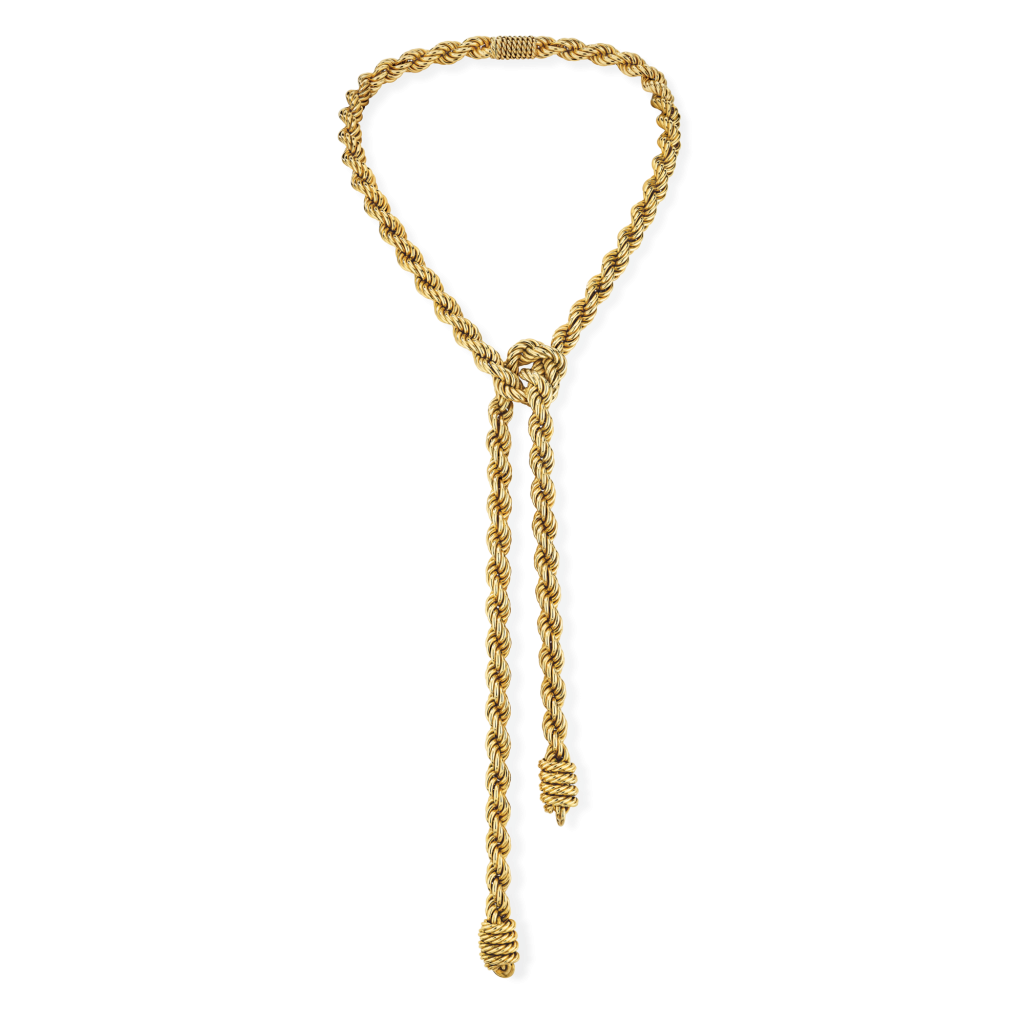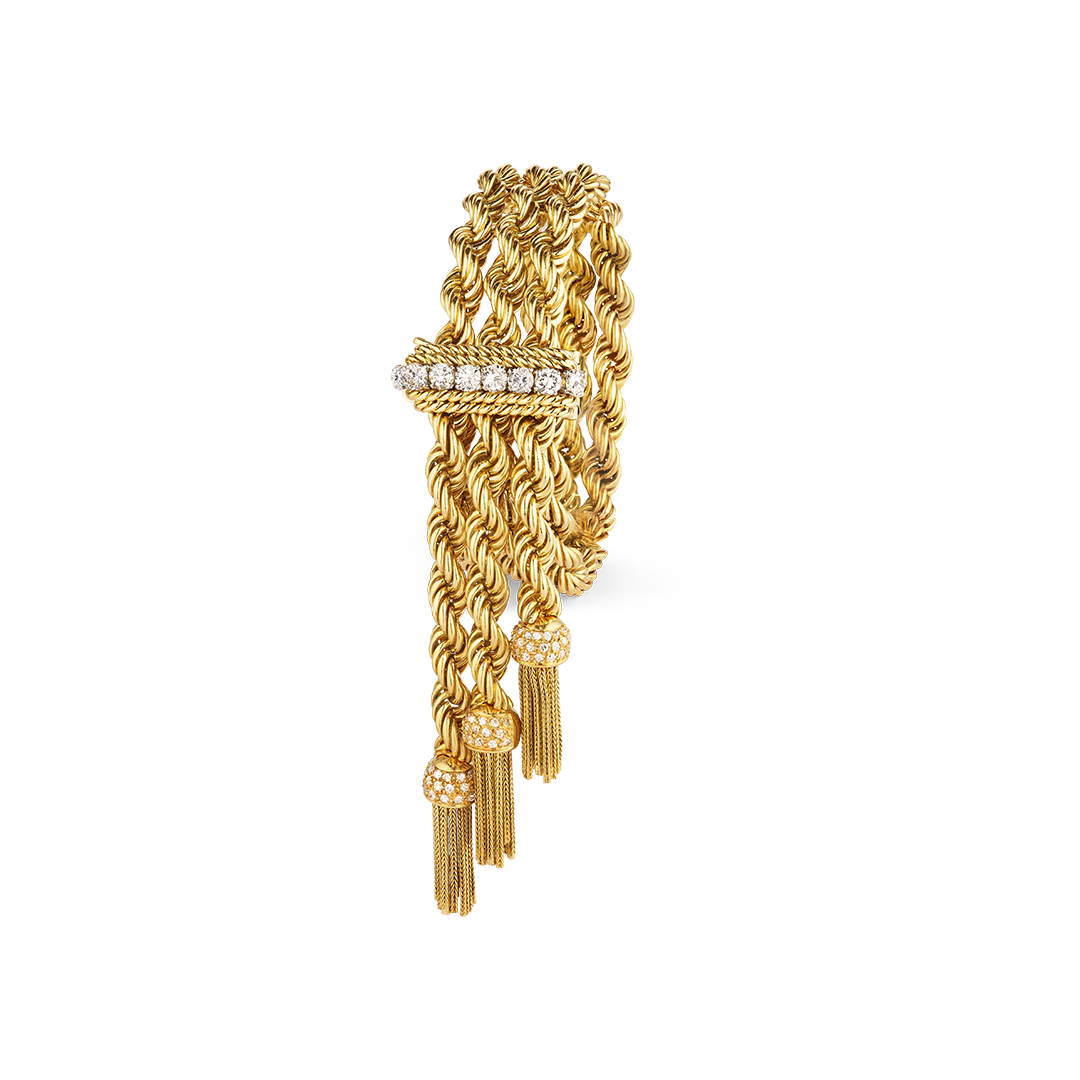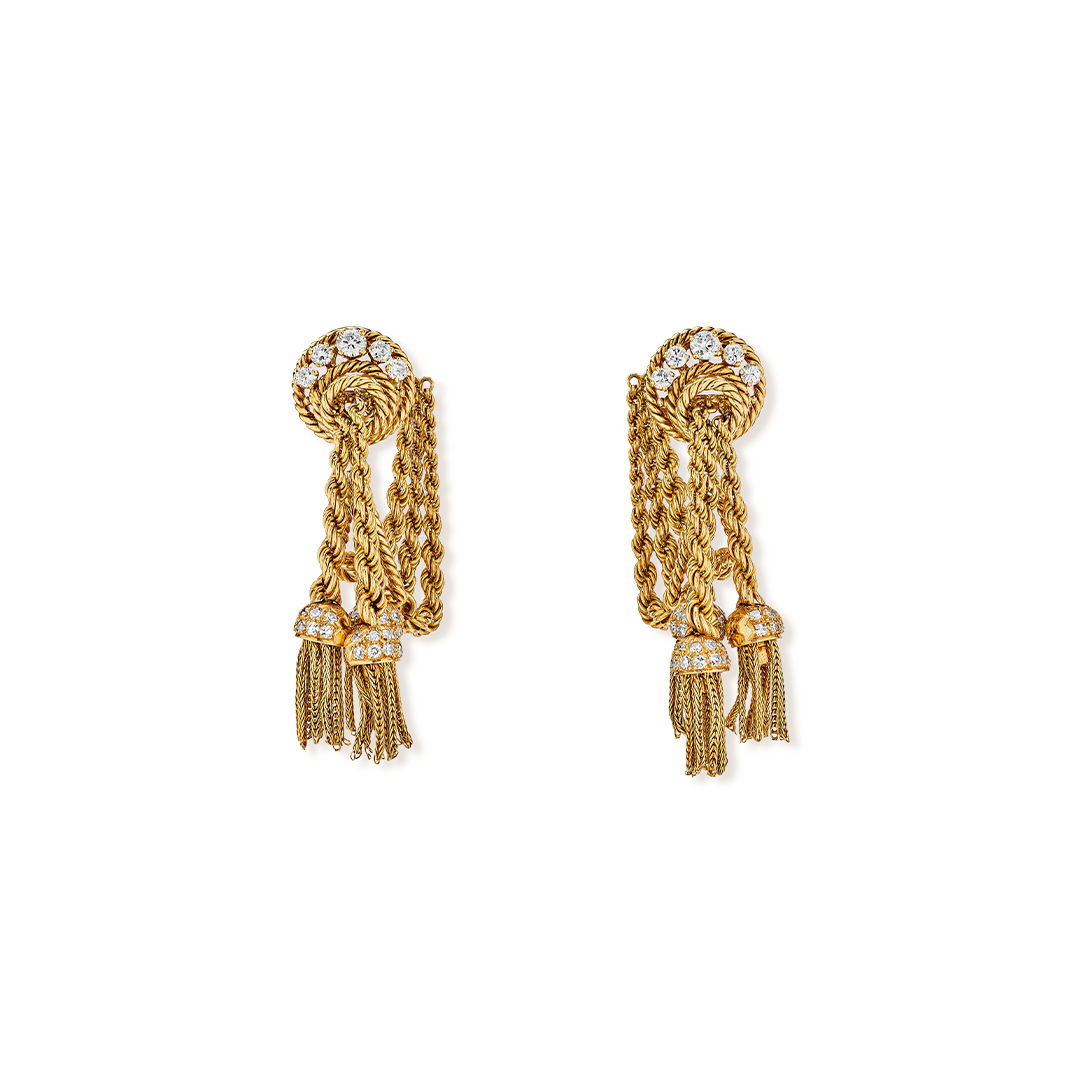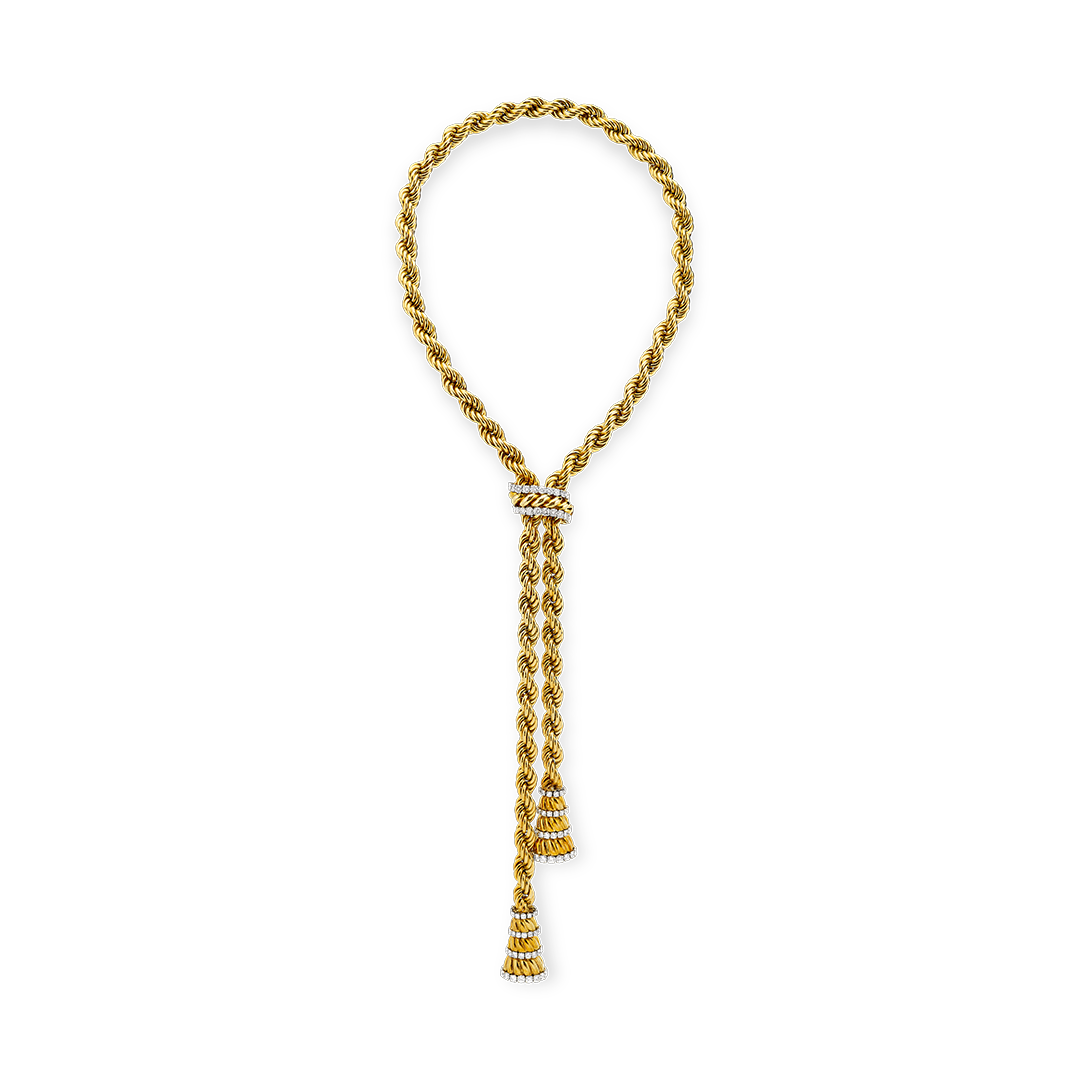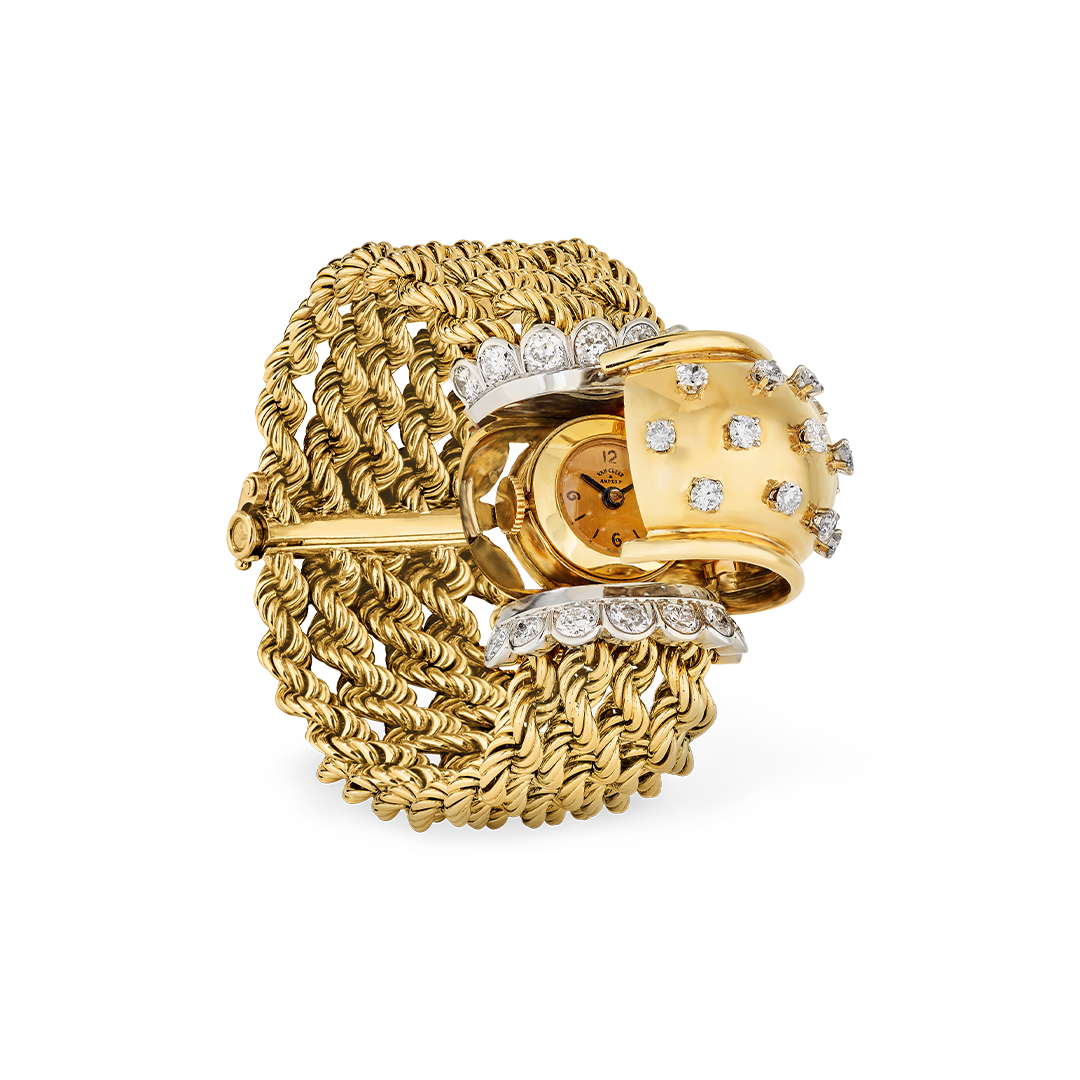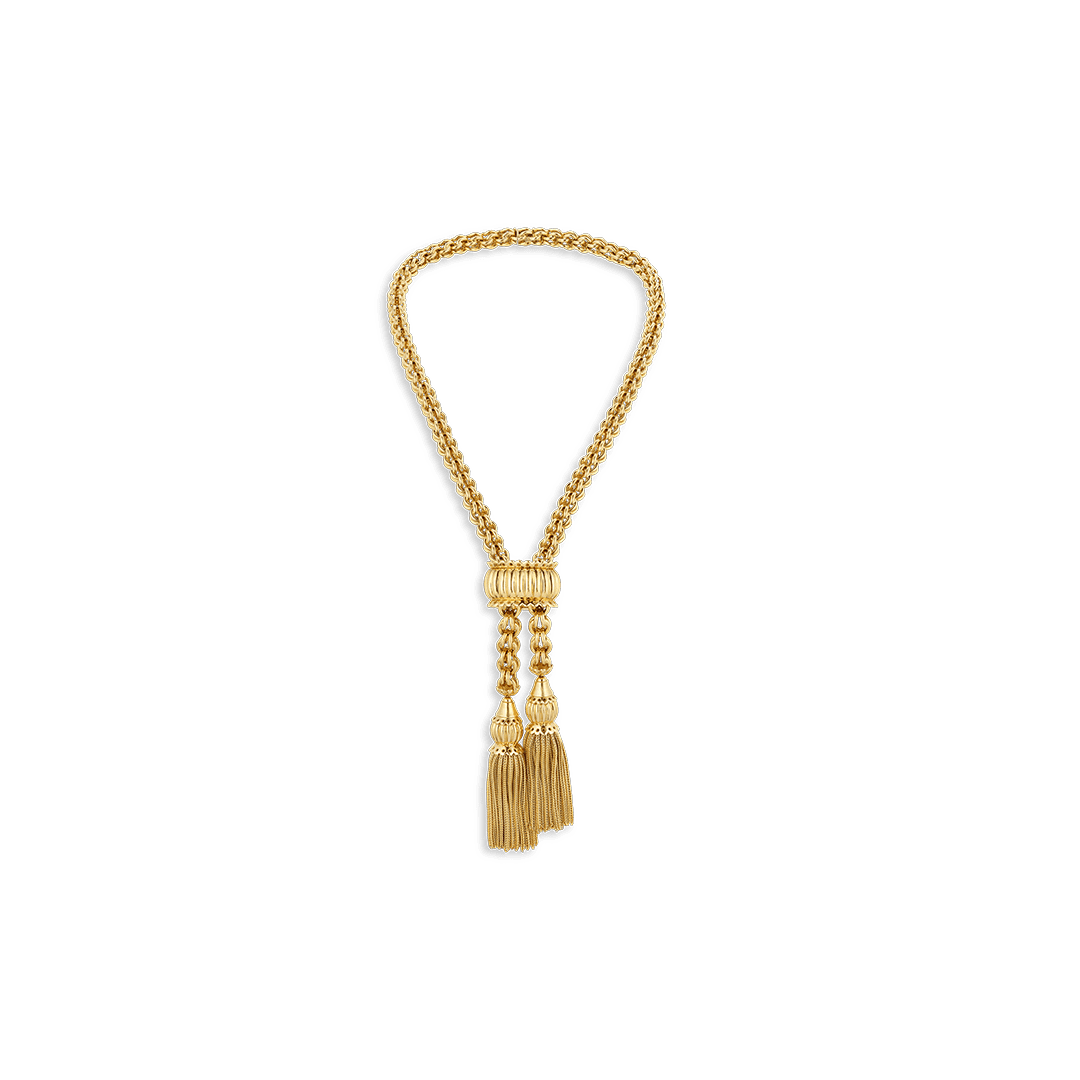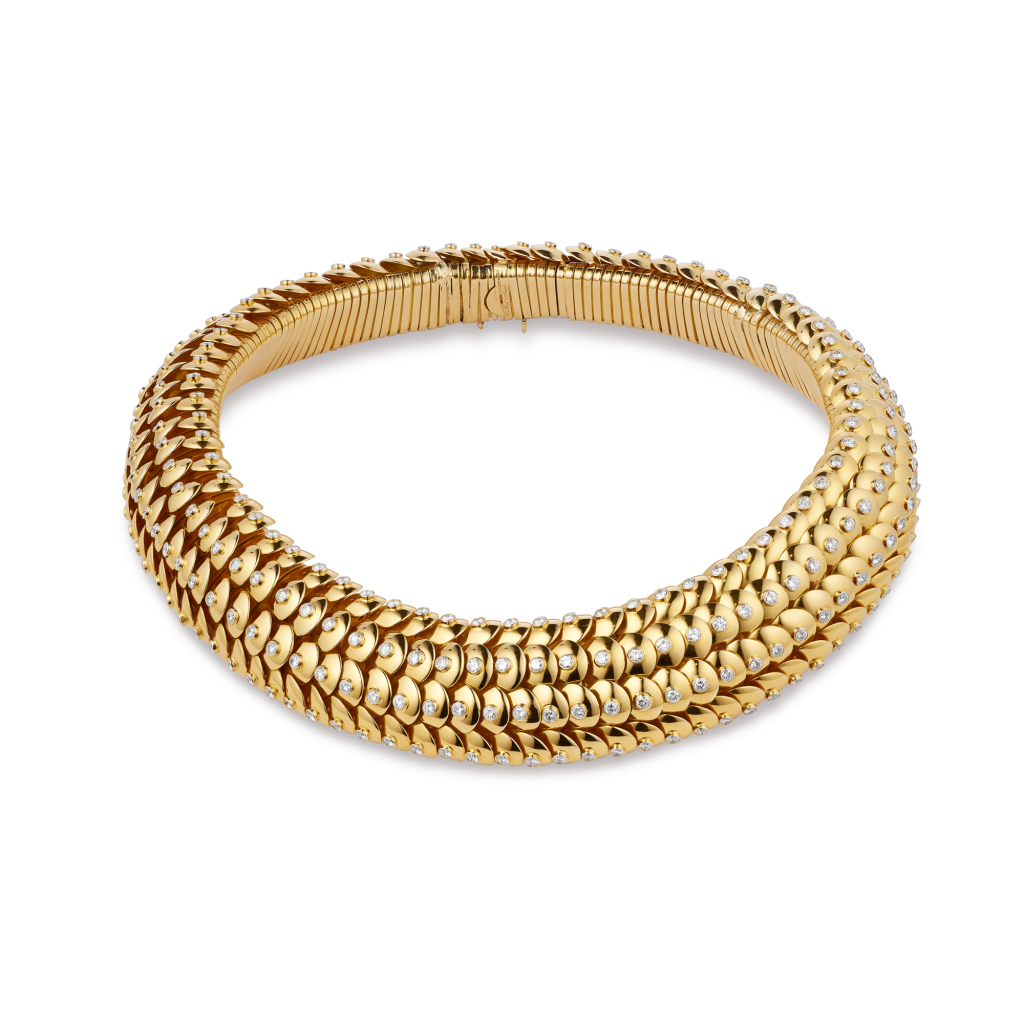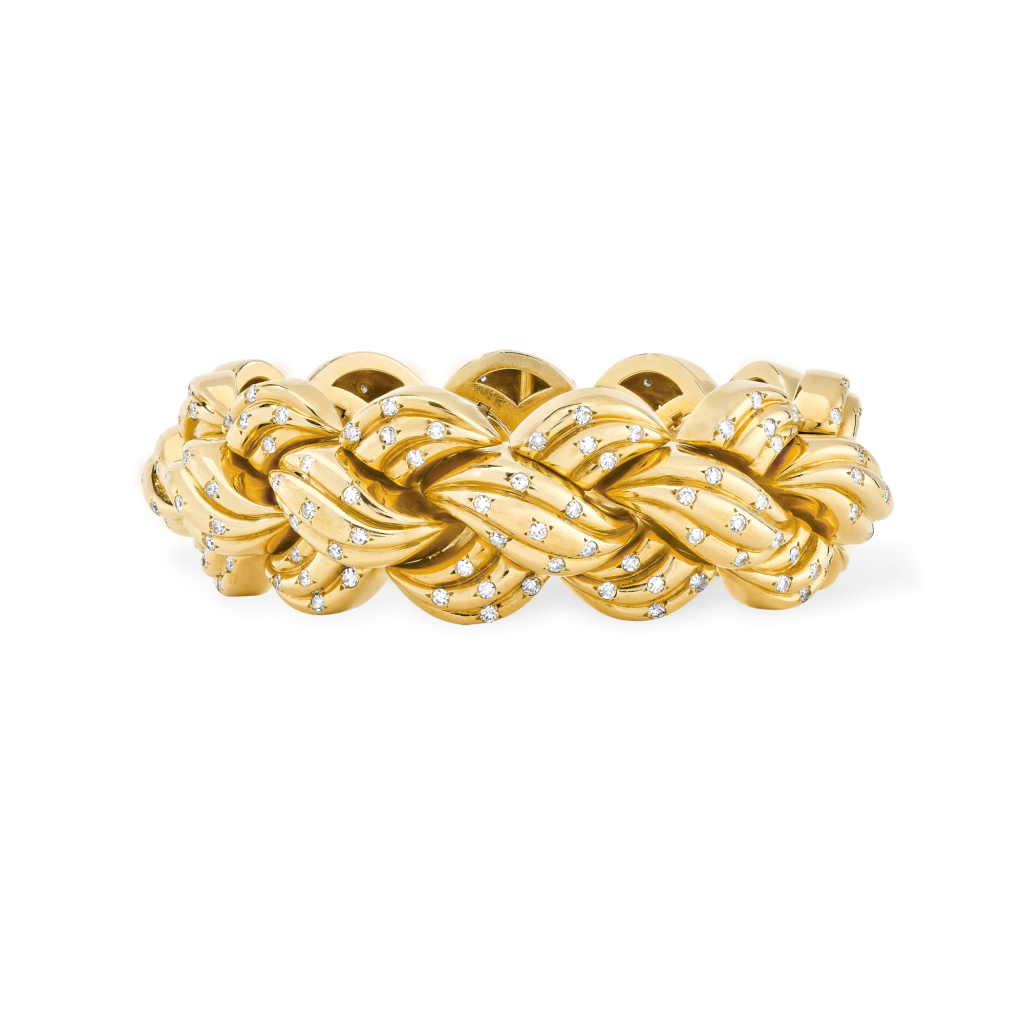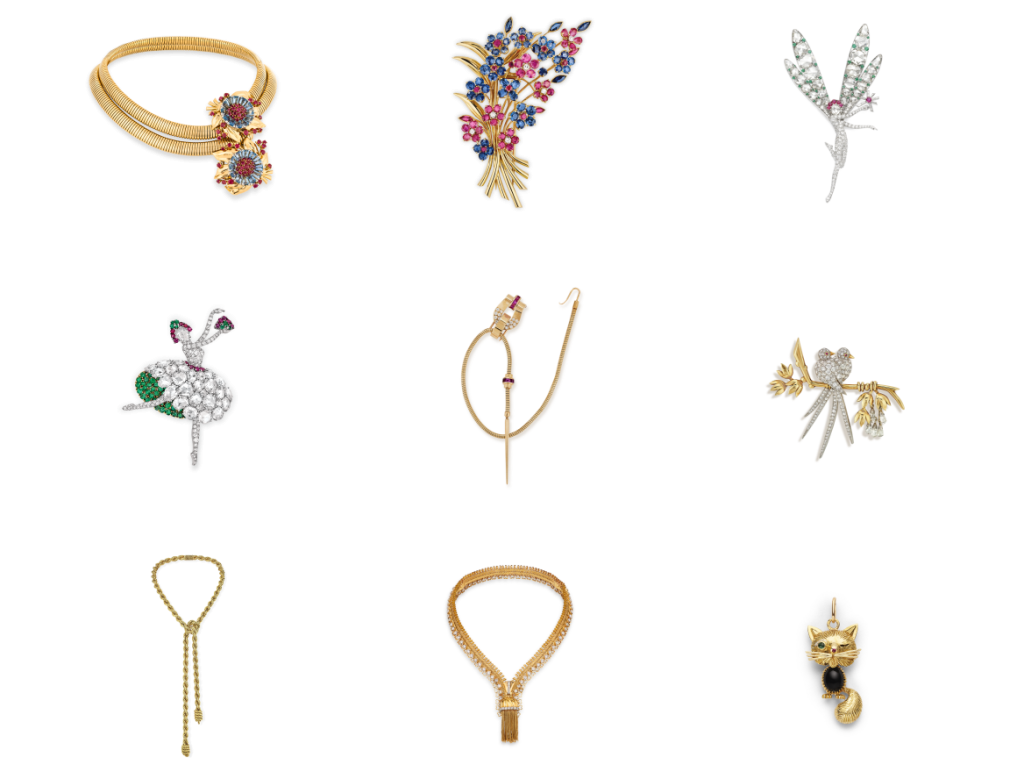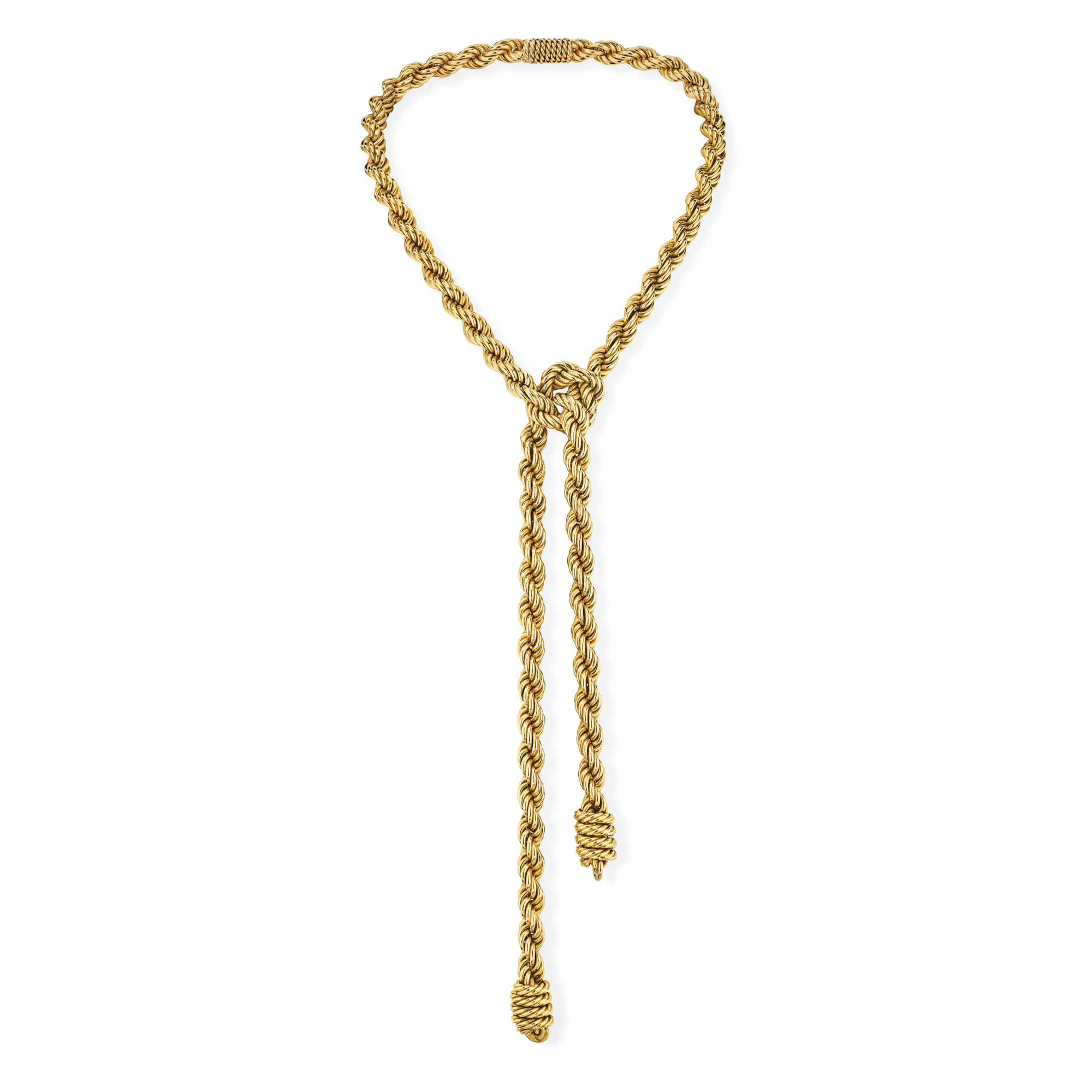
Cord necklace
Creation details
- Creation year 1947
- Usage Necklace
- Dimensions 813 mm
The Cord necklace was created immediately after the war, in 1946, heralding the renewed reputation of French jewelry and couture on an international level. It is composed of nothing other than a twisted yellow gold cord, and attests to the excellence of the chain-maker workshops of the period.
It is knotted at the base of the neck, and ends in two Capuchin knots reminiscent of trimmings for clothing and furnishings. The art of making elaborate trimmings was particularly popular in the seventeenth and eighteenth centuries, notably inspiring many painted trompe-l’œil decorative motifs, as well as gilt-bronze applied ones. Cords, fringes, and tassels were widely used in the furniture arts of the 1940s, evoking the Ancien Régime, as seen in the popularity of the gilt wrought iron- work of the decorator Gilbert Poillerat, clearly inspired by the Grand Siècle. The Cord necklace was part of this same revivalist vein that came to the fore in the 1940s.
The Théâtre de la mode
The Cord jewelry series illustrates the desire to revive a sense of French elegance that emerged immediately after the war. In 1944, France’s luxury industries dreamed up an event that would be a historical milestone for designers, the Théâtre de la mode. Organized by the Trade Association of Parisian Couture, this project was held at the Pavillon de Marsan in Paris. It presented forty dolls made of wire with costumes designed by France’s greatest couturiers. Jewelers were also invited to participate in this display of French know-how.
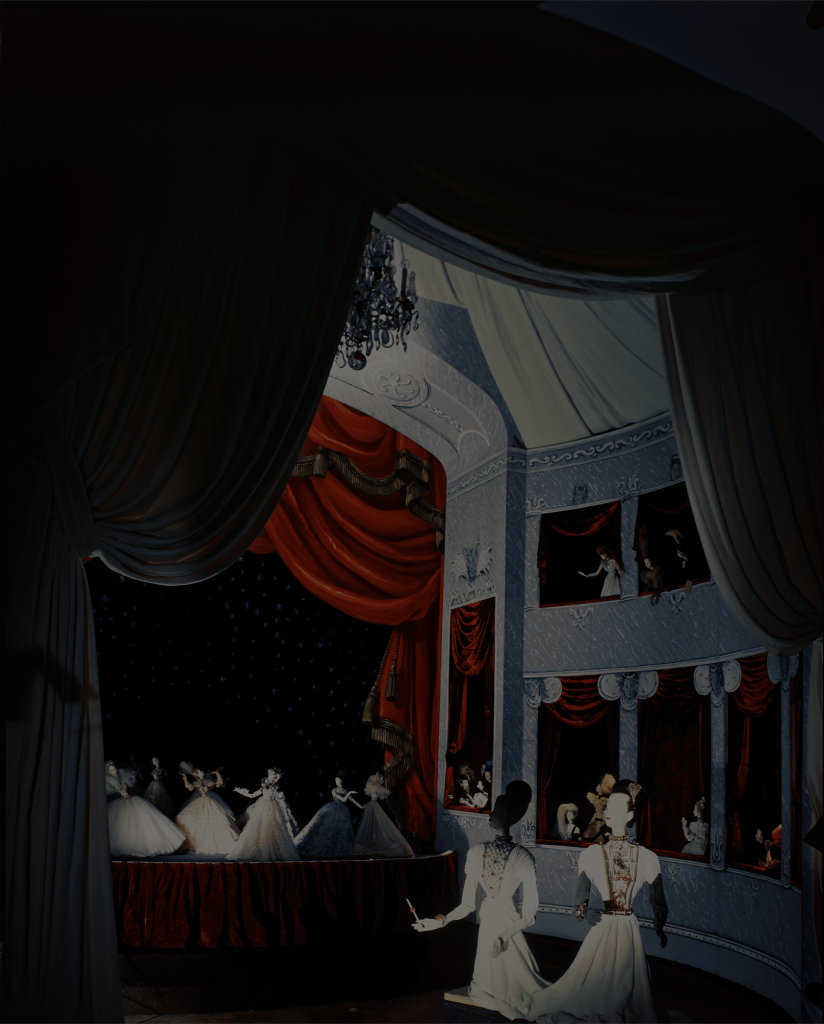
From doll’s jewelry to women’s jewelry
The event was so successful that the couturiers and jewelers involved decided to organize a world tour with it. Van Cleef & Arpels participated in the New York version in 1946. The first piece of the Cord series was designed as a belt for Maggy Rouff’s flowing, white, Grecian-style jersey dress. Van Cleef & Arpels also designed a yellow gold gorget set with precious stones, edged with a cord motif.
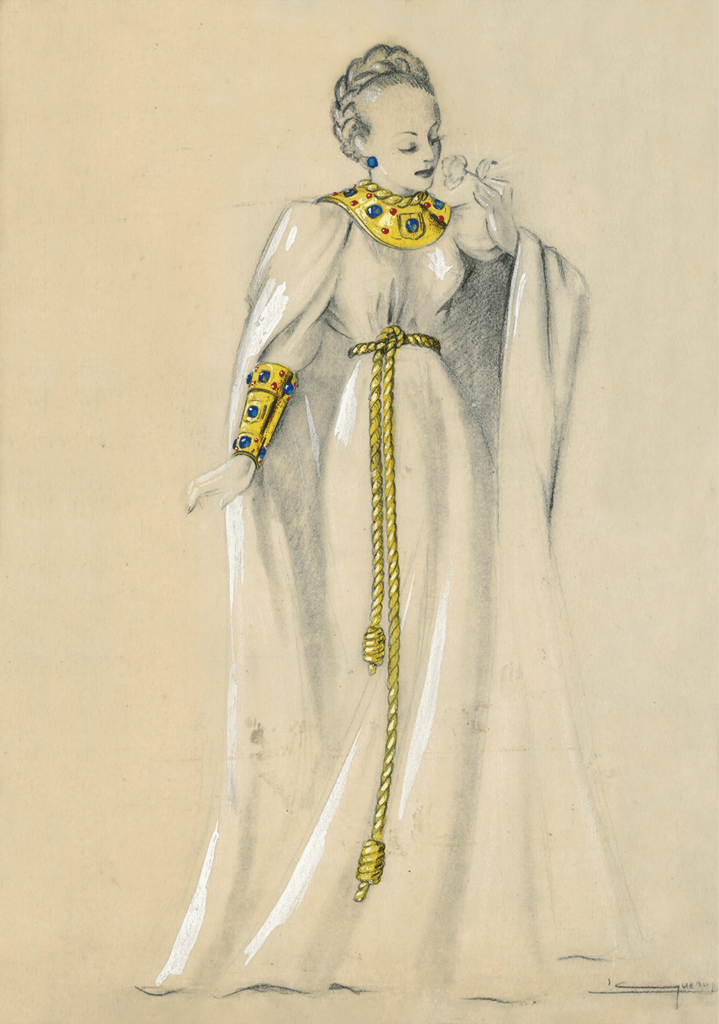
Eight months later, the Maison adapted this doll-size piece of jewelry into one for real women. The yellow gold cord was initially worn as a necklace, and then, after 1947, it was wound around the wrist, before being adapted for earrings in 1950 and for watches in 1952. It was adorned with various ornaments, both textile and floral, which ensured its success until the early 1960s.
To go deeper
